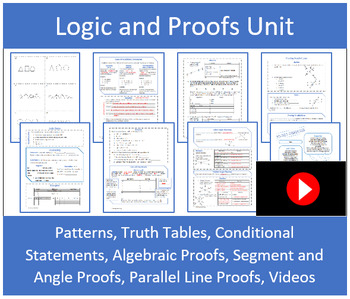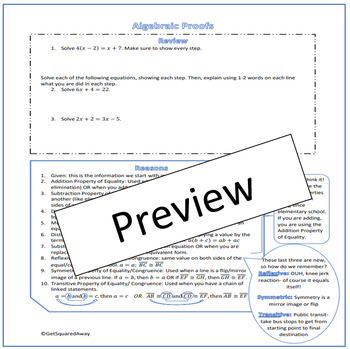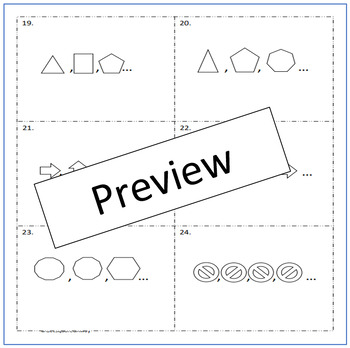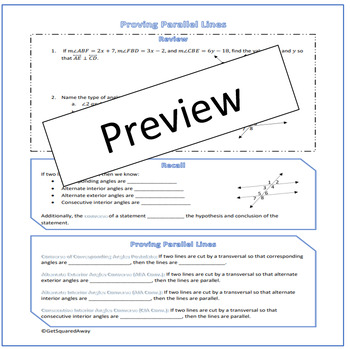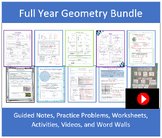Logic and Proofs Unit Bundle with Videos
Products in this Bundle (9)
showing 1-5 of 9 products
Also included in
- This bundle includes 31 digital resources including word walls, guided notes, activities, and practice/worksheets for everything I teach during the first semester of Geometry. There are also video lessons included for each of the guided notes sections. The scaffolded notes provide an extra opportuniPrice $118.00Original Price $159.00Save $41.00
- This bundle includes 84 resources (with video recordings of guided notes lessons) including word walls, guided notes, activities, and practice/worksheets for everything I teach during the the year in Geometry. The scaffolded notes provide an extra opportunity to keep students engaged and provide thePrice $280.00Original Price $393.75Save $113.75
Description
This Logic and Proofs Unit Bundle includes 9 total products including 6 guided/scaffolded notes and practice resources, a partners (or individual) game, a reason/justifications list, and a word wall. This bundle is geared toward a High School Geometry course.
Topics covered include:
-Inductive Reasoning and Patterns (Card Game- in groups or individual)
-Introduction to Logic and Truth Tables (Guided Notes and Practice)
-Conditional Statements (Guided Notes and Practice)
-Algebraic Proofs (Guided Notes and Practice)
-Segment Proofs (Guided Notes and Practice)
-Angle Proofs (Guided Notes and Practice)
-Parallel Line and Transversal Proofs (Guided Notes and Practice)
Resources include diagrams, essential vocabulary and symbols, guided examples, and answer keys (the guided notes have two sets of answer keys: one without example answers for classroom presentation purposes and one full key with work shown).
Also included in each zip folder is an mp4 video file recording of the lesson. This is a zoom recording of my screen as I teach through the lesson notes. All audio and worked out examples are included within the video. This would be a great resource for an online class, a flipped classroom, while you have a sub, or just as a re-teaching resource for students to use.

